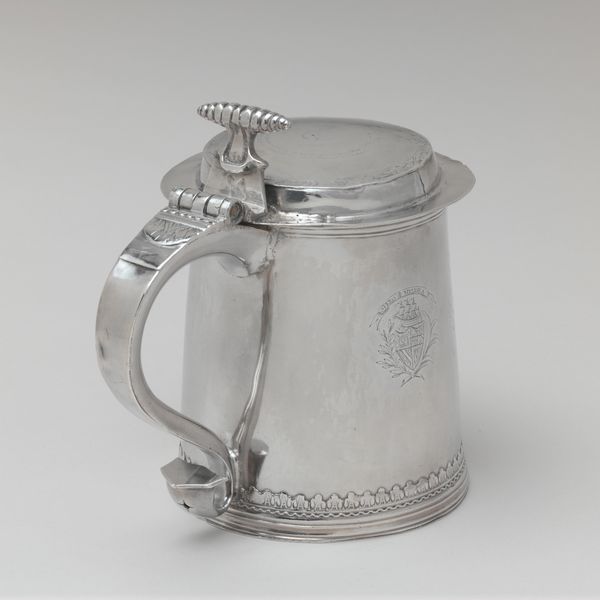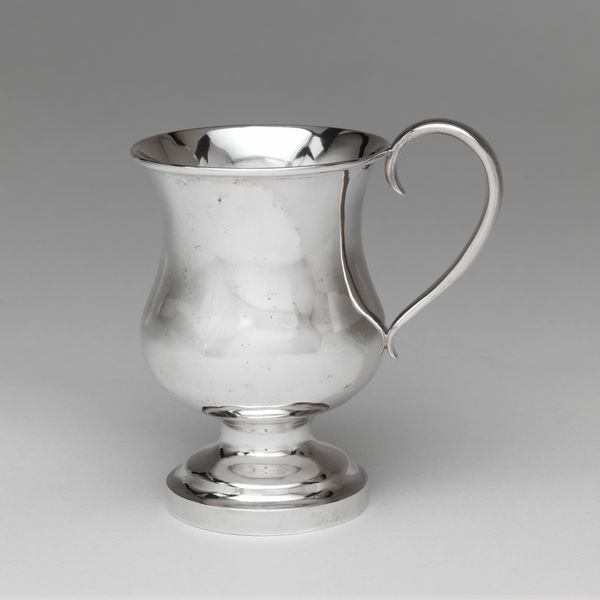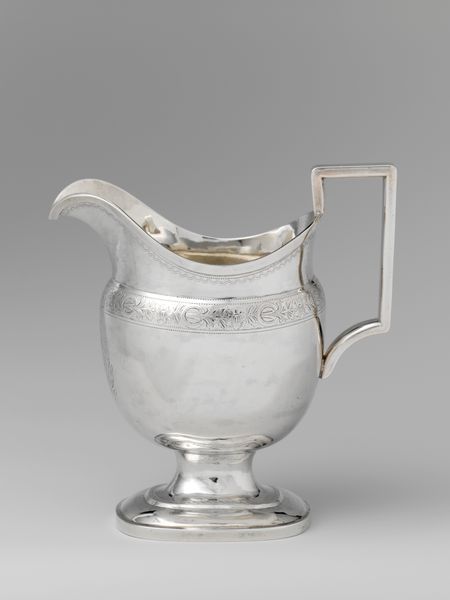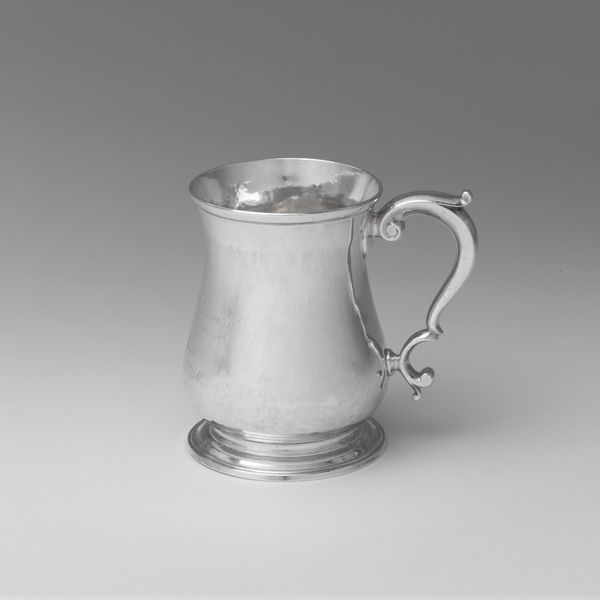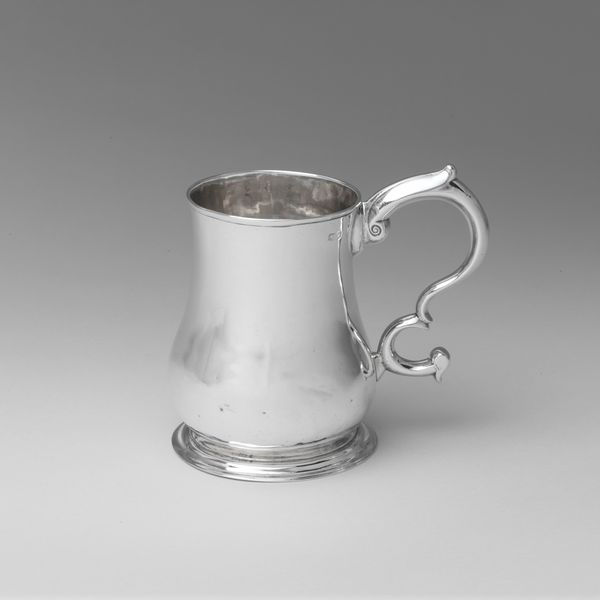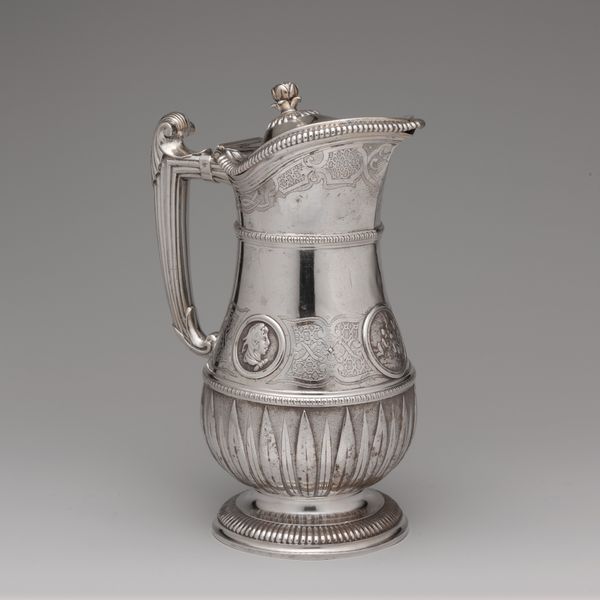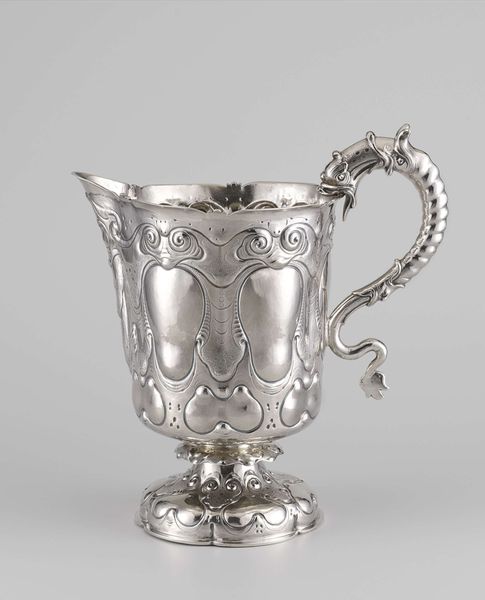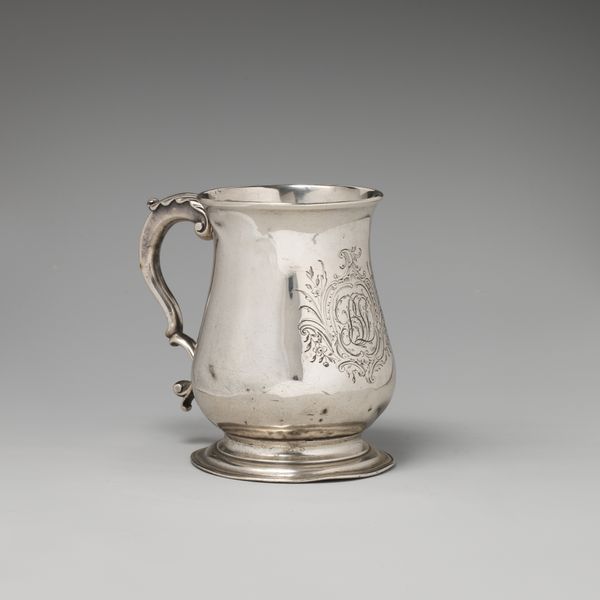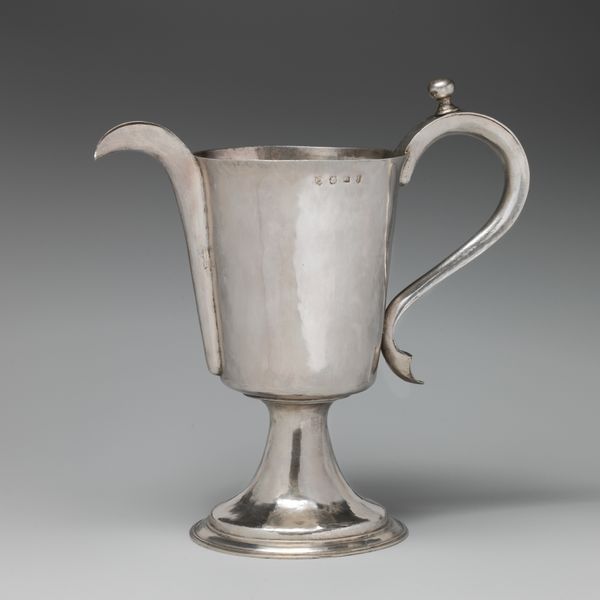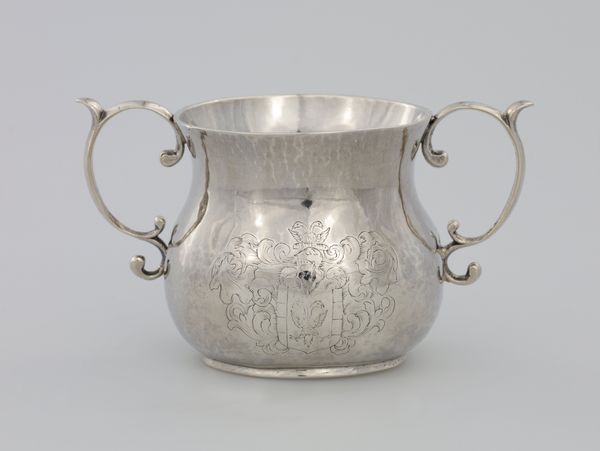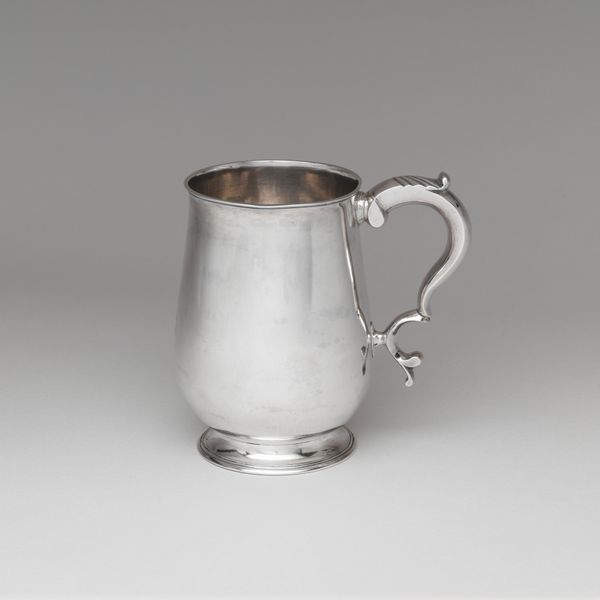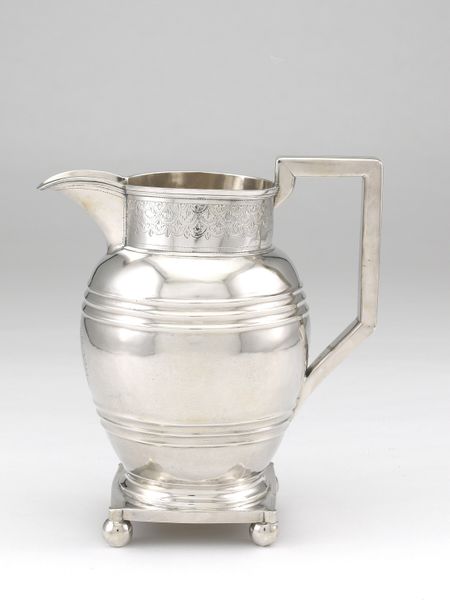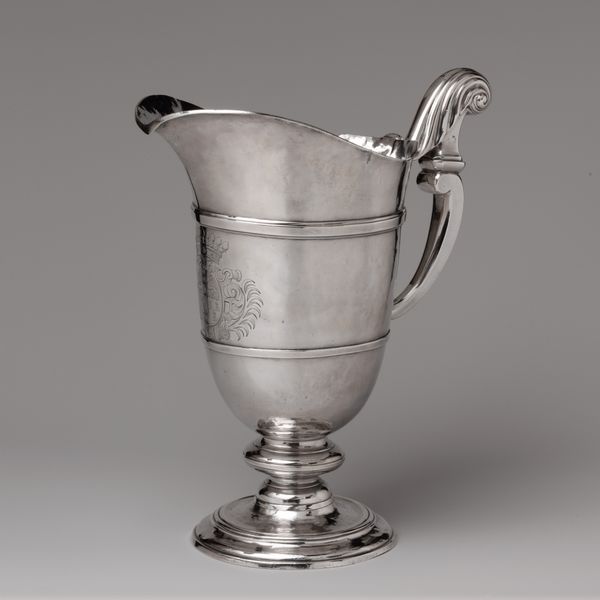
Dimensions: Overall: 11 1/4 x 6 1/8 x 8 5/8 in. (28.6 x 15.6 x 21.9 cm); 39 oz. 16 dwt. (1237.9 g) Foot: Diam. 5 3/16 in. (13.2 cm)
Copyright: Public Domain
Curator: Let’s discuss this silver pitcher, made sometime between 1869 and 1875 by Ball, Black & Co. You’ll find it on display here at the Met. Editor: Well, my immediate reaction is that it’s surprisingly ornate. Given the period, I suppose that shouldn’t be a shock, but there’s something about the heavy silver combined with the almost baroque decoration that feels... opulent. Curator: The opulence certainly speaks to its historical context. We’re in the Gilded Age here, a time of immense wealth accumulation alongside significant social stratification. Decorative objects like this pitcher became signifiers of status. It isn't just functional; it's performative. Editor: Absolutely. Looking at the way it's constructed – the joins, the repoussé work, the chasing on the handle – there's a clear emphasis on craft. It’s less about mass production, more about specialized skill and artistry intended for exclusive consumers. Curator: It prompts us to think about access, or rather, the deliberate lack thereof. Who got to use something like this, and what did that represent? It's not just about beauty; it's about power, about a visual assertion of belonging to a very specific social stratum. And let’s note the lion motif on the handle, invoking European heraldry and aristocracy. Editor: And the very substance of the pitcher–the mined silver, transported, processed by labor in often dangerous conditions—carries the residue of its extractive processes and the power relations ingrained in it. It is not an object separated from exploitation. Curator: Right. It’s almost as if the gleaming surface tries to conceal its raw material origin, as well as the societal imbalances baked into its production. So, what looks beautiful and polished tells a more complex, sometimes ugly, story about that era. Editor: For me, looking at its craftsmanship, reflecting upon where its material came from and where this pitcher resided provides insight into an era that often tries to hide behind elegance. It exposes class distinctions, colonial echoes, and the fetishization of wealth that remain relevant. Curator: I see how looking at this "Pitcher" provokes us to consider broader dialogues of privilege and marginalization that it inevitably calls to the fore.
Comments
No comments
Be the first to comment and join the conversation on the ultimate creative platform.
